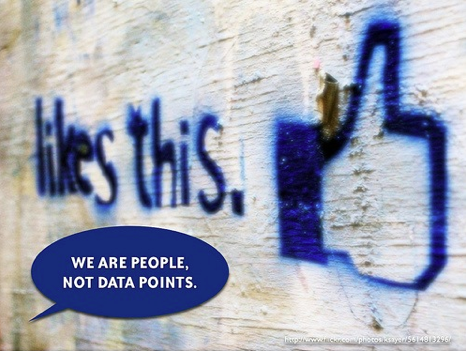This website uses cookies so that we can provide you with the best user experience possible. Cookie information is stored in your browser and performs functions such as recognising you when you return to our website and helping our team to understand which sections of the website you find most interesting and useful.
Chlamydia Statistics for Teenagers
Some people might say that Chlamydia is an infection of young people. Some people might be right. The statistics show that of all the positive Chlamydia tests (4 Chlamydia tests) performed in 2012 in the UK, nearly 70 per cent of those people found to have the infection were under the age of 25.

Make sure you mix passion with safety
As young people become sexually active, there is sometimes a lack of support available to make healthy choices around sex and relationships. In our culture, sex has long been considered a taboo subject or something that is embarrassing to talk about, so it can be difficult to ask the right questions and get the answers that are needed to do the right thing.
However, it is as important to take care of your sexual health as it is to make sure you eat well and get regular exercise. All of these things can contribute to your life-long health and wellbeing.
The story in numbers
Every year, the Health Protection Agency gathers information from services across England, Wales and Scotland to put together a picture of the country’s sexual health. The most recent information available is for 2012, and every visit to a Genito Urinary Medicine (GUM) clinic and every Chlamydia test taken are recorded in the statistics for people of all ages, genders, ethnic backgrounds and geographical locations around the country.

Statistics can be complicated – what do they mean for you?
These statistics show that in 2012, over 70,000 teenagers in the UK were diagnosed with Chlamydia. These are just those who were tested and received a diagnosis; the chances are that many more cases went undiagnosed with young people choosing not to take up tests.
In England, the system of partner notification that exists to contact former sexual partners of someone diagnosed with Chlamydia has led to the diagnosis of nearly 3,500 cases of the infection aged from under 15 to 19 years old. Around half of the people who took up tests as a result of partner notification were found to have the infection, which shows the importance of having a test if your partner or former partner finds out they have Chlamydia so you can get treatment (5 Chlamydia medication) as soon as possible.
Young women aged 19 or under have a much higher likelihood of contracting Chlamydia. Statistics for 2012 from Public Health England shows that female diagnoses of Chlamydia were three times higher than male diagnoses. However, the number of tests carried out in young men compared to young women is not available. There is a possibility that young men are less likely to seek testing than young women.
What do the numbers mean?
Statistics and numbers can be hard to digest, so it sometimes helps to put it into context (8 Chlamydia epidemic). In 2012, one out of every 100 young men under 19 and three out of every 100 young women of the same age tested positive for Chlamydia.
That may not seem like many, that’s not the full story. The figures are worked out for every person in that age group, not just those who are having sex. If you’re not having sex, you’re extremely unlikely to have Chlamydia. If you are, then your chances of getting it are higher than the average of one or three in 100.

It’s not just about statistics. It’s personal
As it says above, these numbers also only include those people who have actually had a test. For many young people too embarrassed to get a test or who don’t know how or where to get one, they could have Chlamydia and not even know about it until it’s too late to act.
Not just another statistic
One of the great things about being young is the feeling that illness can’t touch you. When you’re young and healthy, the last thing you expect is that you could contract an infection that, if left untreated, could have lifelong consequences.
Sara was 19 when she was diagnosed with Chlamydia. She has had regular sexual health check-ups since she started seeing her first boyfriend. A friend of her older sister was diagnosed with Pelvic Inflammatory Disease when she too was 19 and although Sara was only 15 at the time, her sister’s friend had started having sex at about her age and doctors thought that she’d had Chlamydia for at least two or three years before it was diagnosed. Sara remembered her sister talking about how her friend might never be able to have a baby because of the damage the infection had done.
When Sara went for one of her annual check-ups, she was shocked to learn that she had tested positive for Chlamydia. She remembered an occasion when the condom had split while she was having sex with a guy she was seeing for a while, but after taking the morning after pill she hadn’t thought any more about it. It was the only time she could think of when she could have picked up the infection.
The clinic gave Sara a course of antibiotics and booked her back in for a follow-up appointment. Luckily, unlike her sister’s friend, it seemed they had caught the infection early and when the doctor examined her at her appointment there were no signs of the infection or of any damage the infection could have caused.
As a result, Sara is even more cautious and careful when having sex with any partner but particularly a new one. “The only person whose health you really know is your own,” she says. “You should always make sure you get tested.”
Conclusion
Sexual health is an important aspect of overall health for young people and this is particularly true when it comes to testing and treatment of Chlamydia (Hub page). People under the age of 25 make up by far the largest group of people diagnosed with Chlamydia and teenagers account for a signification proportion of those with the infection.
Once you take into account the numbers of young people out of the total population who are likely to be sexually active, the chances of contracting Chlamydia are pretty high. That’s why it’s important to get tested regularly and ensure that you keep yourself safe and healthy.
Image Credits: Ashley Harrigan, Cleecanth and John Spencer



